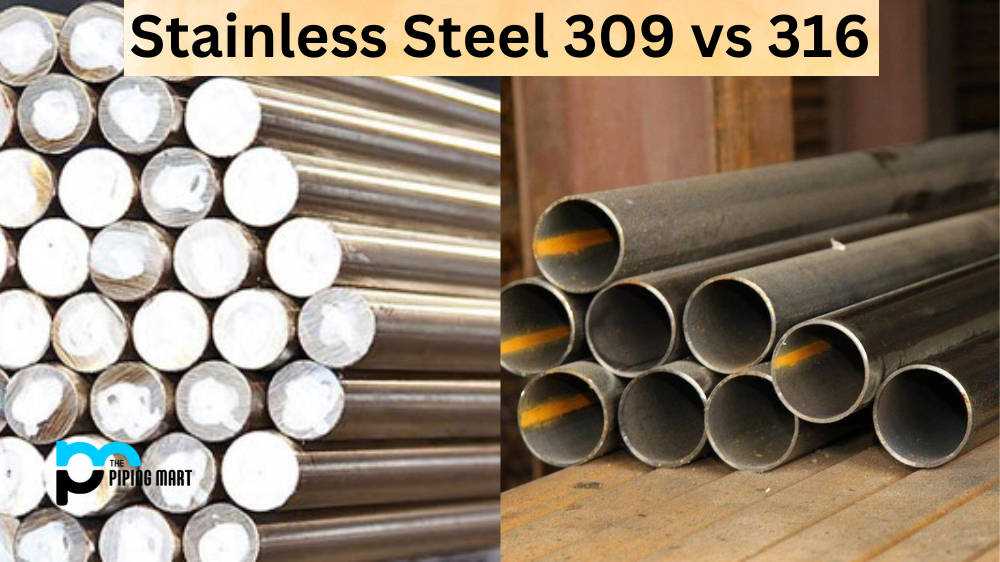Stainless steel is a highly sought-after metal due to its durability, strength, and resistance to corrosion. It is used in many industries, including automotive, aerospace, construction, and food processing. However, not all stainless steel is created equal. The two most widely used types are 309 and 316, which vary in chemical composition and characteristics. If you’re in the market for stainless steel for your next project, consider the differences between these two types to determine which is best for your needs.
What is Stainless Steel 309?
Stainless Steel 309 is a high-temperature-resistant stainless steel alloy commonly used in industrial processes and applications. It has excellent corrosion resistance and good oxidation and ductility characteristics, making it an ideal choice for industries handling frequent temperature changes. This grade of stainless steel can be cost-effectively welded, shaped, machined and fabricated into multiple components.
What is Stainless Steel 316?
Stainless Steel 316 is an austenitic grade of steel that contains between 16-18% chromium, 10-14% nickel, and 2-3% molybdenum. It offers excellent corrosion resistance and strength for applications in harsh environments like the marine or chemical processing industries. Additionally, it has superior properties, such as exceptional weldability and formability, which make it a preferred choice for many construction projects.
Difference Between Stainless Steel 309 and 316
Chemical Composition
One of the biggest differences between 309 and 316 stainless steel is their chemical composition. 309 stainless steel contains 22% chromium and 12% nickel, while 316 stainless steel contains 16% chromium, 10% nickel, and 2% molybdenum. Adding molybdenum sets 316 apart from 309, further increasing its corrosion resistance. This means that 316 is better suited for applications where it will be exposed to harsh chemicals and saltwater, while 309 is typically used in more favourable environments.
Strength and Hardness
Both 309 and 316 stainless steel have high levels of strength and hardness, which makes them ideal for applications where durability is paramount. However, 309 stainless steel has a higher yield strength than 316, which means it can withstand higher stress before it deforms. This makes 309 a good choice for applications with high temperatures or pressure.
Machinability and Weldability
Regarding machinability and weldability, 316 stainless steel is generally considered superior to 309. This is because 316 contains less carbon, which makes it easier to machine and reduces the risk of welding-induced stress cracking. However, 309 is still easy to work with. It’s a highly versatile metal that can be easily formed, shaped, and welded to suit most applications.
Cost
Finally, the cost is important when choosing between 309 and 316 stainless steel. Due to its higher nickel and molybdenum content, 316 is typically more expensive than 309. However, this cost is often justified by the increased corrosion resistance and durability that 316 offers. If your project will be exposed to harsh environments or require a high level of corrosion resistance, the cost of 316 may be worth it.
Conclusion
Stainless steel is a valuable material that can be used in various applications. When deciding between 309 and 316 stainless steel, it’s important to consider factors such as chemical composition, strength and hardness, machinability and weldability, and cost. Each has the unique characteristics that make it ideal for different applications. Ultimately, the decision will depend on your specific needs and the environment in which the metal will be used. By understanding the differences between these two popular types of stainless steel, you can make an informed decision and choose the metal that will work best for your project.

Abhishek is a seasoned blogger and industry expert, sharing his insights and knowledge on various topics. With his research, Abhishek offers valuable insights and tips for professionals and enthusiasts. Follow him for expert advice on the latest trends and developments in the metal industry.




